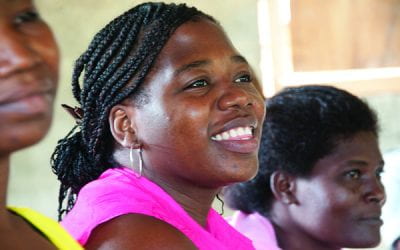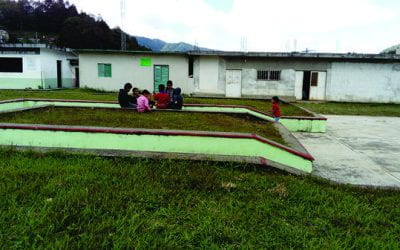The Rise of Afro-Latin America
It was a foundational event. Never before had so many activists concerned with issues of race and justice in Latin America come together to discuss their experiences and to chart new agendas for the future. Never before had racism and racial inequality been so visible, so central in Latin America. Seventeen years ago, on December 5-7, 2000, more than 1,700 activists, government officials and representatives from regional and international organizations gathered in Santiago de Chile for the Regional Conference of the Americas. They were preparing for the World Conference against Racism, Racial Discrimination, Xenophobia and Related Intolerance that would take place in Durban, South Africa, a year later. Romero Rodríguez, then president of the Uruguayan organization Mundo Afro, synthetized brilliantly the impact of these events: “entramos negros, salimos Afrodescendientes” (“we came in as blacks, but came out as Afrodescendants”).
Romero was highlighting a momentous transformation. In many cases for the very first time, the participating states officially recognized the persistence of racism and discrimination in countries that had frequently claimed to be free from such ills. As the Conference’s concluding declaration stated, “ignoring the existence of discrimination and racism, at both the State and the society level, contributes directly and indirectly to perpetuating the practices of racism, racial discrimination, xenophobia and re- lated intolerance.” I followed these events carefully, sensing that they would impact our scholarly work and the nascent eld of Afro-Latin American studies. Anticipation became certainty thirteen years later, as I came to Harvard to found the Afro-Latin American Research Institute, the first research institution in the United States devoted to studying the history and cultures of peoples of African descent in Latin America and the Caribbean. The new field of study had come of age and this process owed much to the Santiago Regional Conference.
The Conference contributed to the creation of a transnational agenda on race, justice and human rights focused on the specific needs and histories of people of African descent, who in Latin America represent between 20 and 30 percent of the total population. States began to see people of African descent as distinctive political subjects with new legal, cultural and ethnic connotations. The Plan of Action approved by the Conference “urged” states to compile and disseminate information that could be used to implement programs of social inclusion and equality, leading to important policy changes. In country after country, activists used these guidelines to demand the inclusion of ethno-racial categories in national censuses and other official statistics, seeking to counteract the previous invisibility of Afrodescendants. The results are telling. Whereas only the censuses of Cuba and Brazil gathered information according to skin color or race in the 1980s, today almost all countries in the region include this question in some way. Numerous countries introduced constitutional reforms to acknowledge the existence and specificity of peoples of African descent and to explicitly condemn racial discrimination. The number of state offices devoted to issues of discrimination proliferated across the region. Several countries introduced compensatory policies to counter the historical effects of racism and to create educational and economic opportunities for individuals of African descent.
Brazil led many of these efforts, as the administrations of Fernando Henrique Cardoso (1995-2002), Luis Inácio Lula da Silva (2003-2011) and Dilma Rousseff (2011-2016) implemented a variety of policies that sought to reduce income inequality—including some forms of racial inequality. These included conditional cash-transfer and income-maintenance programs such as Bolsa Família, which supports families below the poverty level on condition that their children attend school regularly. At the same time, since the 1990s different forms of racial quotas and af rmative action policies in higher education and employment were implemented in that nation, home to the second largest Afrodescendant population in the world, after Nigeria.
These policies were hotly debated and even challenged legally, but in 2012 the Supreme Court decided unanimously that racial quotas were constitutional. That same year the Brazilian Senate approved, almost unanimously, the Law of Social Quotas, requiring the country’s federal universities to reserve one-half of their entering places for graduates of the country’s public schools; to guarantee that black, brown and indigenous students are represented in numbers equivalent to their proportion in the local population; and also to guarantee that at least half of the quota students meet certain income criteria. These quotas are being phased in gradually and it will take some time before we can evaluate their full impact on Brazilian society. All analysts concur, however, that their impact is significant and, as President Dilma Rousseff told me in one of her visits to Harvard, the quo- tas are probably irreversible. Indeed, it is noteworthy that the two most prestigious universities in the country, UNICAMP and São Paulo, approved racial quotas in admissions only recently, in the summer of 2017.
In any case, thanks to the concerted efforts of the activists of the Afrodescendant movement, of state institutions, and of a variety of international organizations and actors, it is now impossible to sustain that the countries of Latin America are free from racial discrimination and inequality. This is a major transformation in how the peoples of Latin America think about themselves, their nations, their cultures, and their history.
Most scholars and activists have interpreted this transformation as conclusive evidence that the traditional ideologies of mestizaje and racial harmony that came to define the nations of Latin America for decades are now bankrupt. The typical explanation states that the countries of the region have transited “from” ideas of mestizaje and racial democracy “to” the recognition of racial differences and the implementation of racially-based policies such as af rmative action. These explanations are based on the belief that race-justice policies are only possible if previous formulations of race and nation that downplayed racial conflicts are debunked as pernicious lies. It is an either/or approach that leaves little room to indeterminacy and creativity: it is either mestizaje or racial justice, racial harmony or racial equality.
I beg to differ with these interpretations, which tend to ignore some of the specificities of race making and nation building in Latin America. It is true that the ideologies of mestizaje and racial harmony glossed over social and racial injustices, since they advertised harmony and mixture as the essence of Latin America. It is also true that by linking racial harmony with the fate of the nation, these ideologies condemned certain forms of racial mobilization as antipatriotic and harmful, contributing in the process to the reproduction of social hierarchies and racial prejudice. Afrodescendant activists, artists and politicians who ar- ticulated demands for racial justice could be depicted as ungrateful and resentful, even as traitors. That is why the history of Latin America is littered with examples of upwardly mobile blacks who were shut down, contained, repressed or executed.
But this is not the whole story of race and nation in Latin America. There are other possibilities, other paths. The ideologies of mestizaje and harmony were not just tools of social control, but utopian visions of racially harmonious and racially integrated nations, anticipations of a future when racial distinctions would eventually cease to have social meaning and impact. Places so utterly mixed, so hopefully mestizo, that they would be the envy of the allegedly civilized populations of Europe, who spent the early decades of the 20th century killing each other, or of the United States, who spent the same decades lynching the others. Todo mezclado, as Afro-Cuban poet Nicolás Guillén wrote in the 1940s. It was a familiar metaphor, as illustrated by the Mexican raza cósmica of José Vasconcelos, by the Luso-tropical civilization of Brazilian Gilberto Freyre, by the Cuban ajiaco of Fernando Ortiz, or by the café con leche of Venezuela’s Andrés Eloy Blanco. Todo mezclado.
Polling data from the 2010 Americas Barometer, analyzed by sociologist Edward Telles and collaborators, confirms that most residents in countries with large Afrodescendant populations, such as Brazil and Colombia, continue to embrace the ideologies of mestizaje and perceive racial mixing as a positive trait of their nations. Most importantly, this belief is widely shared across racial groups and finds similar levels of support among whites, blacks, mestizos and mulattos. This would suggest that these ideologies are truly national, in the sense that they are embraced by most people, regardless of social and racial background. In what sense, then, have Latin Americans moved away “from” their cherished utopias of racial mixture and harmony?
More to the point, the same data suggest that most people in the region do not see any contradiction between these national ideologies and public policies that seek to redress racial inequality and discrimination, including policies of affirmative action. Many Latin Americans support such policies not despite the ideologies of mestizaje and racial harmony, but rather because of those ideologies, which posit that Latin American nations should be, even if they are not in practice, racially egalitarian and inclusive. As any other utopian vision, these national myths misrepresent social realities. But if the vibrant Afrodescendant movement in the region is any indication, and I believe it is, there is little evidence that such representations are necessarily paralyzing or fatal. The recent history of race and mobilization in the region rather suggests that these ideologies can become platforms for emancipatory approaches to race and justice.
Still, the fact is that for most Afrodescendants in the region, these possibilities remain unrealized. People of African descent continue to face formidable barriers to social mobility and equality. Dark skin continues to predict poverty and marginalization with appalling precision. Dark skin invites police repression and incarceration. Dark skin means lower salaries, fewer opportunities, higher infant mortality, lower life expectancy. Dreams and utopias matter, but precisely because they do, Afrodescendants demand results. Now.
Winter 2018, Volume XVII, Number 2
Alejandro de la Fuente is the Robert Woods Bliss Professor of Latin American History and Economics and Professor of African and African American studies at Harvard University. He is the director of the Afro-Latin American Research Institute at the Hutchins Center for African & African American Research.
Related Articles
Afro-Latin Americans: Editor’s Letter
My dear friend and photographer Richard Cross (R.I.P.) introduced me to the unexpected world of San Basilio de Palenque in Colombia in 1977. He was then working closely with Colombian anthropologist Nina de Friedemann, and I’d been called upon by Sports Illustrated to…
Witches, Wives, Secretaries and Black Feminists
The issue of gender has been front and center for me, both as a subject of my fieldwork on black politics in Latin America, and how I conducted that research, particularly in how I…
Compañeros En Salud
English + Español
I have lived in non-indigenous rural Chiapas in southern Mexico since 2013, working with Compañeros En Salud (CES)—a Harvard af liated non-profit organization that partnered with…




